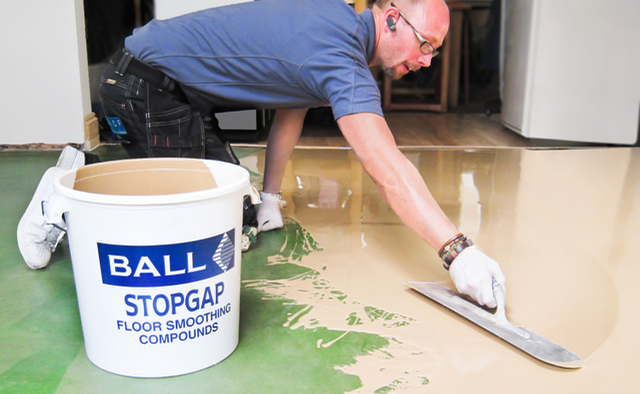Installation instructions for floor levelling compounds normally include a minimum and maximum thickness at which the levelling compound should be applied. The upper limit will ensure that the compound is able to dry out correctly and retain its integrity. It is relatively rare to come across problems caused by levelling compounds being applied too thickly, as most contractors are conscious that the thicker the material is applied, the less coverage is achieved.
In contrast, the temptation to spread a levelling compound too thinly is more prevalent and this can and does give rise to problems in the performance of the floor.
We’re talking millimetres
The minimum thickness advised for many levelling compounds is only 2 or 3 millimetres (some require a minimum of 5mm).
And whilst even a millimetre less than the prescribed minimum might not seem that significant, it can cause problems. Levelling compounds are carefully formulated to perform in a certain way at the specified thickness and display properties that will ensure a finished floor will perform up to the required standard.
Formulated to perform
These properties include:
- specific flow characteristics that help the levelling compound to create a smooth finish at the correct depth.
- the ability to absorb the moisture present in a floor covering adhesive.
- sufficient thickness to attain the necessary strength required.
Modern day levelling compounds are designed to flow easily with the minimum amount of trowel work to encourage the flow. If a trowel is being used to ‘drag’ the compound into position or the trowel is being used in the same way as it would be to apply adhesive (i.e. with the trowel in contact with the subfloor), it is a sign that there is not sufficient levelling compound to work with.
What can (and does) go wrong
Without applying the recommended minimum thickness, problems can occur, particularly if the subfloor is non-absorbent or has limited absorbency. Some of these problems will be heightened if a resilient floor covering is being installed, such as vinyl/PVC, lino and rubber.
Potential issues that could arise include:
- Insufficient bond strength between the adhesive and the levelling compound – this can occur if the adhesive doesn’t have a sufficient ‘body’ of levelling compound to dry into.
- Blistering or discolouration of the floor covering – this can be caused by moisture from the adhesive collecting between the floor covering and the non absorbent subfloor, especially as nowadays, many adhesives are water based.
- Surface imperfections showing up through the floor covering – as well as providing a sound surface for the adhesive to tie into, the levelling compound is designed to create a perfectly smooth finish, free from blemishes and imperfections. Without sufficient coverage, the likelihood of surface imperfections or trowel lines showing through the floor covering is hugely increased.
- Substandard strength of the levelling compound, especially if it is located in areas that experience high levels of foot traffic or heavy equipment. This will shorten the lifespan of the installation, which will show signs of aesthetic deterioration and/or the floor covering becoming detached from the sub floor.
All of these problems have been seen by the F. Ball technical department a number of times over the years. All of them have been caused by not applying the advised minimum thickness of floor levelling compound.
And don’t forget to prime…
Priming is essential for almost all flooring installations. One exception is when using products that have been developed for use without a primer, such as F. Ball’s Stopgap 1200 Pro floor levelling compound, which is for use over old adhesives residues. Otherwise, priming promotes good adhesion between the subfloor and the levelling compound and, importantly, prevents the levelling compound from drying too rapidly, which could compromise its integrity.
…or check for moisture
As with every flooring installation, the subfloor must be dry, with a relative humidity level of below 75% (or below 65% if wood floor coverings are being installed). If it is not sufficiently dry, a waterproof surface membrane must be applied.


